Transactional emails are crucial in customer communication, as they provide essential information and contribute to the overall customer experience.
The importance of this type of email in the marketing approach is often overlooked. But the expert found otherwise. You can improve customer experience with transactional emails, leading to sustainable sales volume.
Enhancing customer experience with transactional emails involves several key strategies and practices. Start reading this article to learn them and implement them in your transactional email sending.
What are transactional emails – Definition
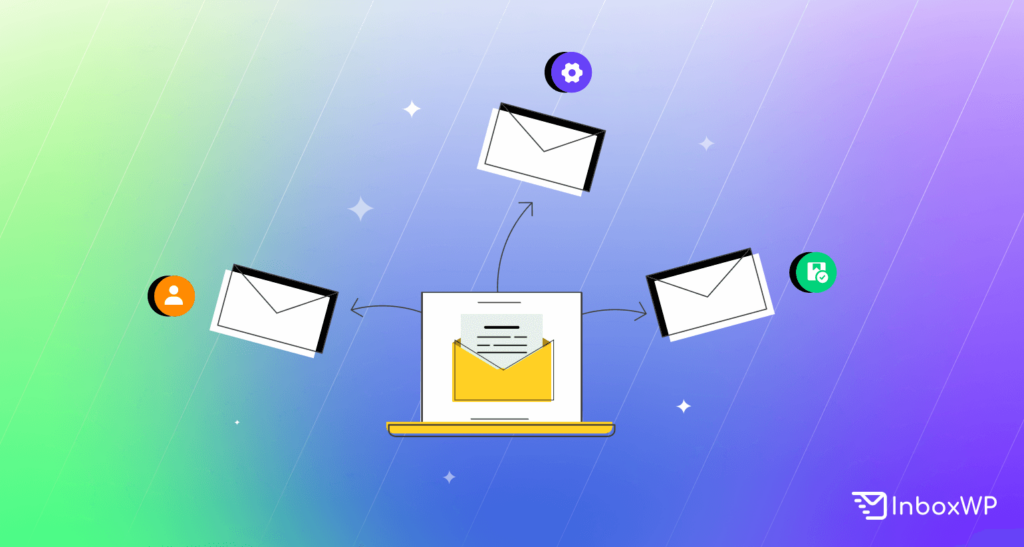
Transactional emails are automated emails that are triggered by a specific user action or transaction.
It’s not like promotional or marketing emails, rather these emails are primarily focused on delivering important and relevant information to the recipient. Transactional emails are mainly sent as a response to a user’s interaction with a website, application, or service.
As they are fully automated, so whenever an action is triggered, the user gets an email with the instructions or acknowledgment they require.
Some major types of transactional emails
Take a look at the following email types you get to receive or send while using a website/service. They all are considered transactional emails –
Order Confirmation Email
Sent to customers after they place an order, confirming the details of their purchase, including product information, billing details, and shipping information.
Shipping notifications
Sent when a product has been shipped, providing the customer with tracking information and estimated delivery dates.
Account creation or confirmation email
They are sent to users after they sign up or create an account, confirming their successful registration and providing any necessary login information.
Password reset emails
Triggered when a user requests to reset their password, providing them with a secure link or temporary password to regain access to their account.
Payment receipts
After payment is made by a customer, you can send a WordPress email to confirm the transaction. Payment confirmation/receipt email includes details like the amount paid, the date of payment, and any other relevant information.
Appointment reminders
This kind of email is sent after you set an appointment with your client. The email includes the date, timing, location, and needful notes. If you are using a WordPress transactional email sender, the job will be easier.
What are the differences between transactional emails and marketing emails?

Transactional emails and marketing emails serve different objectives and goals to improve your customer experience. They also work in distinctive ways.
Take a look at the common differences between these two types of emails –
1. Purpose
Transactional emails are primarily focused on delivering specific information or confirming a transaction or action initiated by the user.
On the other hand, marketing emails are designed to promote products, services, special offers, or other marketing campaigns to a targeted audience.
2. Trigger
Transactional emails are triggered by a user’s specific action or transaction, such as making a purchase, creating an account, or requesting a password reset.
While marketing emails are sent to a predefined list of subscribers who have opted to receive your email or newsletters.
3. Content
The content of transactional emails is also different in nature. They often contain essential information directly related to the user’s action, such as order details, shipping information, or account updates.
Marketing emails are persuasive in nature and focus on driving engagement, conversions, and building brand awareness. They often include promotional content, discounts, product updates, newsletters, or event invitations.
4. Relationship with the customer
The primary goal of a transactional email is simple. It aims to aim to facilitate and support the user’s interaction with a website, application, or service. They are necessary emails to guide users to complete a specific action.
Marketing emails aim to nurture and maintain relationships with customers, prospects, or subscribers, and encourage them to take desired actions such as making a purchase, signing up for a service, or visiting a website.
5. Compliance
Transactional emails are essential, and users ask for them. Your system can send these types of emails when someone triggered an event. So, there’s no way you could bother them.
On a different note, marketing emails must maintain email marketing rules and regulations, like gaining proper user consent, adding an unsubscribe option, and complying with anti-spam laws, etc.
These all are good reasons that make sense: marketing emails and transactional emails are different. But can you increase the quality and boundaries of your transactional emails? If you can, it surely will improve your customer experience.
Why are transactional emails often neglected in email marketing

Transactional emails are sometimes neglected in email marketing because they are primarily seen as functional and informational rather than promotional in nature.
Many people overlooked the potential of a well-tailored and optimized transactional email. Take a look at the following reason for the negligence in the first place –
Focus on marketing campaigns: As an email marketer, you may often prioritize creating and optimizing marketing campaigns to drive sales, engagement, and conversions. On the other hand, transactional emails, are more operational and transaction-focused, so they may not receive the same level of attention or resources.
Compliance and deliverability: Transactional emails are typically exempt from certain email marketing regulations and may have higher deliverability rates compared to marketing emails. As a result, marketers may assume that transactional emails require less optimization and neglect them in favor of focusing on marketing campaigns that require more compliance considerations.
Separate ownership and responsibilities: In some organizations, transactional emails may be managed by different teams or systems compared to marketing emails. This siloed approach can lead to a lack of coordination and oversight, resulting in transactional emails being neglected or not aligned with the overall email marketing strategy.
Lack of testing and optimization: Marketers often allocate more resources and time to testing and optimizing marketing campaigns, including subject lines, content, and design. Transactional emails may not receive the same level of testing and optimization, leading to missed opportunities for improving the customer experience and driving additional engagement or conversions.
While transactional emails may not have the same overt promotional intent as marketing emails, they still offer valuable touchpoints with customers.
Neglecting transactional emails means missing opportunities to enhance customer experience, reinforce brand loyalty, and generate additional revenue through strategic content and personalized recommendations.
So, understanding their importance and integrating them into overall email marketing strategies can bring better benefits for your brand in the end.
How to send transactional emails to increase customer engagement levels
1. You should avoid no-reply emails
Marketers are used to sending no-reply emails for valid reasons. The goal is clear. You don’t want your inbox to fill up with possible unnecessary email replies from customers or subscribers. But if you try to fathom the big picture, the practice gonna looks like a drawback.
You can’t make sure or don’t know when a customer feels abandoned or annoyed by getting one of your emails that comes from a no-reply email address. With every no-reply email, you are closing the room for future interactions.
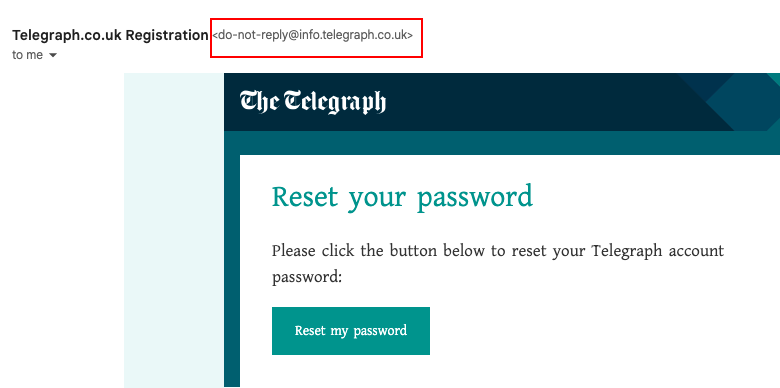
However, it’s no heavy task to get rid of this practice.
You can change the no-reply email address into a reliable one with your business domain name.
Try to use an email address that looks simple and trustworthy, and can easily reach your marketing team through them.
2. Adding an FAQ section in your email would be helpful
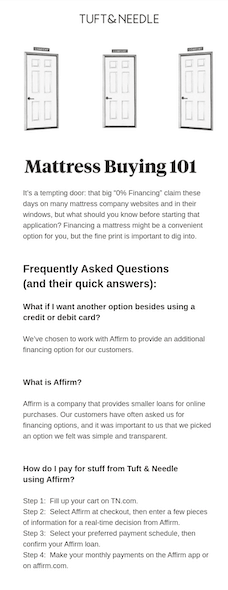
Adding a Frequently Asked Questions (FAQ) section in transactional emails can be a helpful practice for your subscribers.
Including an FAQ section gives customers quick access to answers to common questions or concerns they may have regarding the transaction or your product and business.
Here are some of the top reasons you should add an FAQ to your transactional email –
a. Addressing frequently asked questions in the email can save customers the effort of reaching out to customer support or searching for answers elsewhere.
b. Some customers prefer finding answers on their own rather than contacting customer support. By including an FAQ section, you empower them to resolve their queries independently, improving efficiency and reducing support ticket volume.
c. Anticipating common customer queries and providing answers in advance demonstrates your commitment to customer service. It shows that you understand their needs and are proactive in addressing their concerns, which fosters trust and loyalty.
d. In addition to addressing common questions, you can use the FAQ section to highlight related products, services, or features that customers may find valuable.
3. Make your transactional email copy simple and precise
The simplest thing about email copywriting is this – you write something that guides the audience and convinces them to take action.
So, your email copy should be engaging in the first place. Therefore, the email copy starts to influence the audience from the subject line. Even before they open your email, your subject line provides the necessary gravity to complete the process. After that, the email copy of the body plays the big game.
The same thing can be said for a transactional email copy. Though you have fewer rooms in this type of email, it also increases your chances to get noticed and making a conversion.
The goal of a transactional email is simple: if someone asks for a password reset, you ought to send him/her a new password option. But also, you can add some spice like the following email –
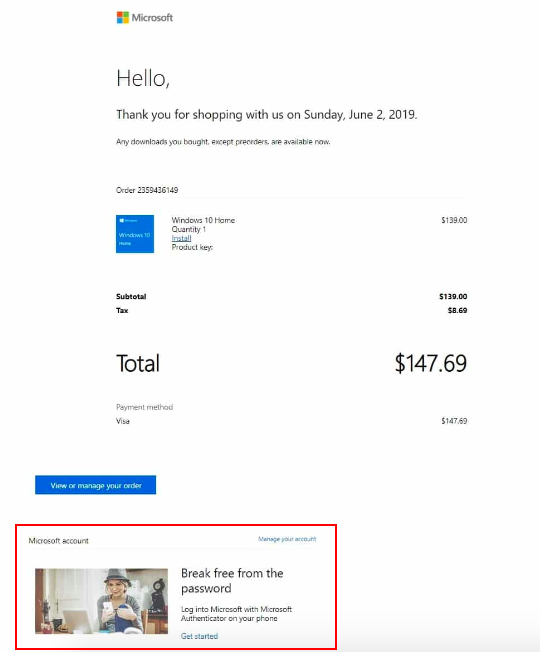
Don’t you think “break free from the Password” is an engaging copy? Yes it is, it can hit the right cord for needful people.
4. Add your CTA with a marketer’s POV
Every email includes a call-to-action (CTA), which helps the user to take the desired action.
While you are adding a CTA in a transactional email, for example – a product delivery update, your CTA should say something like – “See your delivery”
What if you are sending a user notification email? You can surely get an idea following the LinkedIn email below –

The best way to add the tight CTA is to have a marketer’s point of view. As you are using the necessary CTA in the first place in your transactional email, you can implement a second call-to-action that will be focusing more on user engagement.
Well, what is a secondary CTA? The CTA which contains a supporting link or acts as the alternative action to the primary CTA is renowned as the secondary CTA.
Two major reasons your second CTA in a transactional email could work are –
a. It Strengthens your primary CTA
b. Secondary CTA can switch your leads to conversions
This transactional email best practice can easily improve your customer engagement level.
5. Try to use engaging and beautiful images
Most businesses underestimate the power of visuals in transactional emails. Though, if you can add the right image in your email, it would be helpful to your customer to connect.
Based on the type of your email, a well-placed relevant image can make a big difference. Where most transactional emails look dull, you can have a catch with the right visuals.
Here’s how Squarespace sent this email after a customer ends his/her trial period –
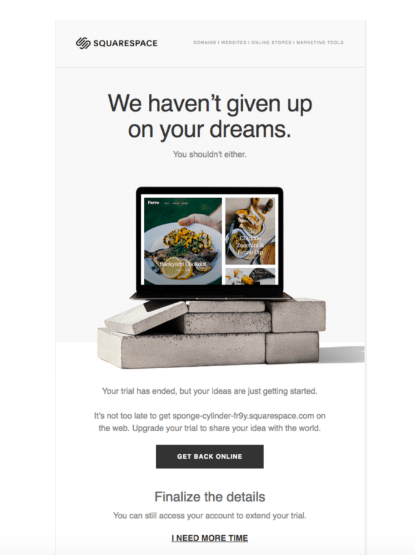
This is a very good transactional email example that elevates the customer experience to the highest extent.
Not only the use of a relevant image, you can talk about its copy and CTA positioning also.
Here’s another example of a visually stunning transactional email from Chipotle –
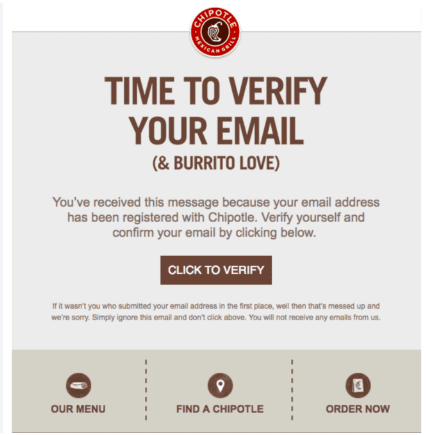
From choosing the color, fonts, and CTA styles at the bottom – the email is anything but dull. And, its biggest plus point is its interactive nature. The right image can change your email user engagement this way.
Closing Ups
To send pitch-perfect and timely transactional emails in WordPress, you could get help from a tool like InboxWP.
While using InboxWP or any WordPress email-sending tool, all you need to do is revamp your transactional email strategy. Following the aforementioned best practices, we believe you can increase the customer engagement level with your transactional emails.
To learn more about transactional email and tips, you can check out the InboxWP blog.
